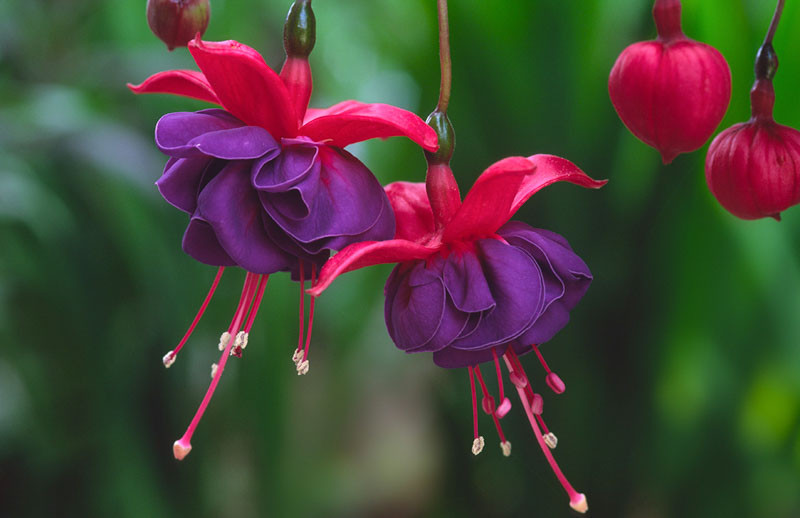
Fuchsias (Fuchsia spp.) are beautiful flowering plants that are known for their pendulous blooms in various colors. Here's a step-by-step guide on how to grow fuchsias:
Choose the Right Location: Fuchsias prefer partial shade to filtered sunlight. Select a spot in your garden that receives morning sun and afternoon shade or dappled light. Avoid planting them in full sun, as it can scorch the leaves and flowers.
Soil Preparation: Fuchsias thrive in well-draining soil that is rich in organic matter. Prepare the soil by adding compost or well-rotted manure to improve its fertility and drainage. If your soil is heavy or clayey, consider amending it with perlite or coarse sand to improve drainage.
Planting: Fuchsias can be grown from seeds, but they are most commonly propagated from cuttings or purchased as young plants. Dig a hole that is slightly larger than the root ball of the plant. Place the plant in the hole, ensuring the top of the root ball is level with the surrounding soil. Backfill the hole and gently firm the soil around the plant.
Watering: Fuchsias prefer consistently moist soil but not waterlogged conditions. Water the plants thoroughly after planting and then maintain regular watering, especially during hot and dry periods. Aim to keep the soil evenly moist, but avoid overwatering, as it can lead to root rot. Mulching around the base of the plants can help conserve moisture and regulate soil temperature.
Fertilizing: Fuchsias benefit from regular feeding to promote healthy growth and abundant blooms. Use a balanced fertilizer with a ratio such as 10-10-10 or 20-20-20. Apply the fertilizer according to the manufacturer's instructions, typically every 2-4 weeks during the growing season. Avoid over-fertilizing, as it can lead to excessive foliage growth with fewer blooms.
Pruning: Fuchsias respond well to pruning, which helps maintain their shape and encourage bushier growth. Prune fuchsias in early spring, before new growth begins. Remove any dead or damaged branches and cut back long, leggy stems. Pinch or prune the growing tips to encourage branching and more flower production.
Support: Fuchsias often benefit from some form of support due to their delicate, pendulous growth habit. Install stakes or plant supports early in the growing season to help keep the plants upright and prevent them from bending or breaking.
Protection from Frost: Fuchsias are generally not cold-hardy and can be damaged or killed by frost. If you live in an area with frost or freezing temperatures, consider growing fuchsias in containers that can be brought indoors during the winter or provide them with appropriate protection, such as covering them with frost blankets or bringing them into a protected area.
Pest and Disease Management: Monitor the plants for common pests such as aphids, whiteflies, or spider mites, and take appropriate measures to control them if necessary. Fuchsias can also be susceptible to diseases such as rust or botrytis. Ensure good air circulation around the plants and avoid overhead watering to reduce the risk of fungal infections.
By following these guidelines, you can enjoy the stunning and elegant blooms of fuchsias in your garden or containers. With their vibrant colors and graceful appearance, fuchsias can be a delightful addition to any landscape.

No comments:
Post a Comment